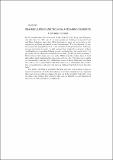| dc.description.abstract | In the decades since the enactment of the Federal Food, Drug, and Cosmetic Act (the "Act")' in 1938, one of the more persistent challenges facing the Food and Drug Administration (the "FDA") has been to apply an old statute to the regulatory problems generated by new technologies. The development of new anti-aging skin preparations is a recent example of this phenomenon. Although potions purporting to make the skin younger have existed for centuries, today's youth-seekers are spending billions on new products that just might work. In particular, the development of alpha hydroxy acids ("AHAs") has been promising. Derived from fruit, sugar cane, and milk, AHAs cause the surface layer of dead skin cells to shed, hastening the appearance of fresh cells. The laboratory results are inconclusive thus far, but preliminary research shows that some products may deliver active ingredients to the skin's inner layer, stimulating the production of moisturizing acids and cells such as collagen that help to keep the skin firm. | en_US |


